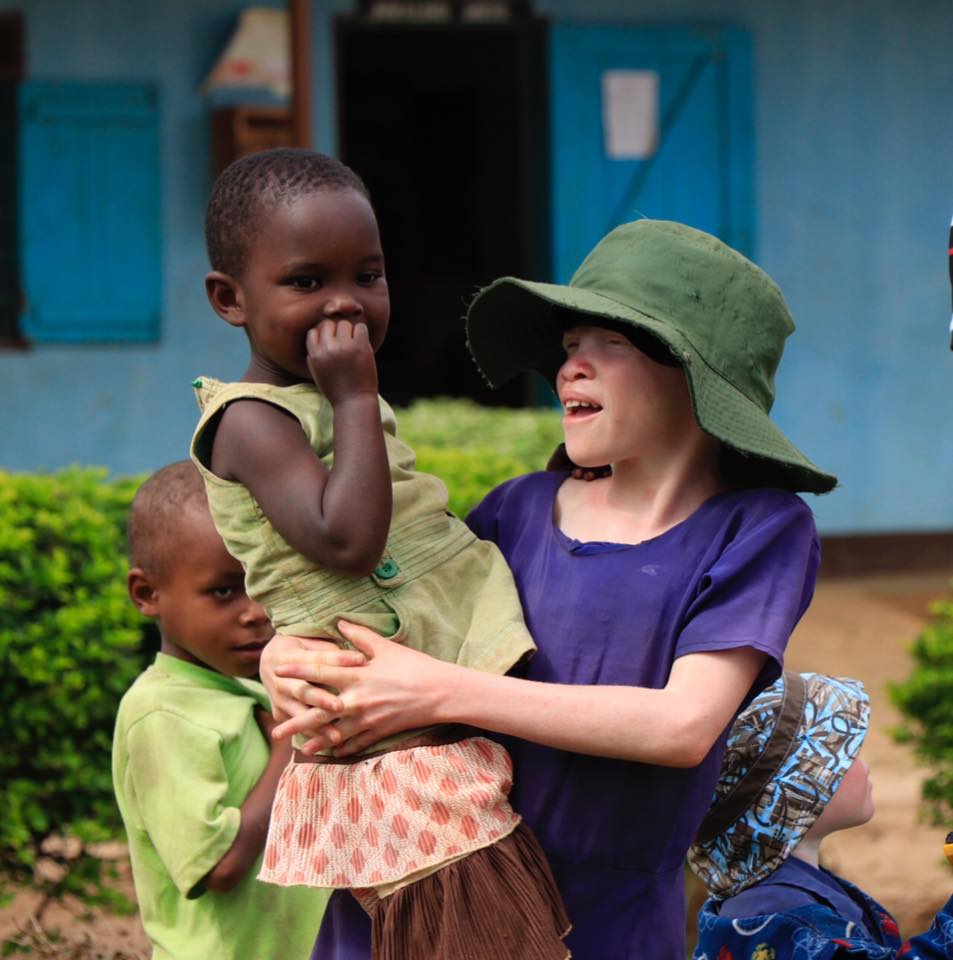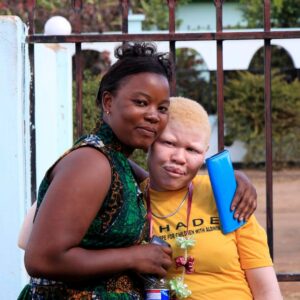This past week on social media, we shared a series called Albinism 101. The goal of these photos and facts was to provide information about albinism by answering some common questions. Being informed and sharing that information is a powerful form of advocacy for people with albinism- a people group that faces discrimination, attack, and health challenges. Here’s a recap, in case you missed it!
What is albinism? Is it common? (1/6)

???? Albinism is a genetically inherited condition resulting in reduced pigment in the skin, eyes, and hair.
???????? Albinism is much more common in Tanzania than in the west. Approximately one in every 1,400 children born in Tanzania is born with albinism. This is the highest rate in all of Africa and a significantly higher rate than in Europe and North America, where approximately one in 20,000 people has albinism.
???????????? This week, we will be sharing some facts about albinism. Consider it your Albinism101.
Why do you say ‘albinism’ and not ‘albino’? (2/6)

???????? By saying ‘person with albinism,’ you are putting the person ahead of their condition. They are people first, in the same way that it is more appropriate to say ‘person who is blind’ rather than ‘blind person.’
Do people with albinism face health challenges because of their condition? (3/6)

???? Yes. Albinism affects the eye, causing visual impairment. Many people with albinism are legally blind and all have extreme sensitivity to light.
☀️ Due to a lack of melanin in their skin, people with albinism are very susceptible to skin cancer, and early stages of skin cancer are often seen in children. A lack of awareness on how a person with albinism protects him/herself from sun exposure and possible inaccessibility to sunscreen only worsen their health issues.
What challenges do people with albinism face? (4/6)

???? Discrimination & Rejection. They are often stared at, made fun of, and rejected by their peers. Many husbands abandon their wives when they give birth to a child with albinism. Many newborns with albinism are killed at birth. Attempts to protect children with albinism may lead to them being locked away and being robbed of a normal childhood and education. Adults with albinism find it hard to become employed.
???? Superstition, Witchcraft & Attacks. In Tanzania, albinism is misunderstood. Witchdoctors take advantage of this, spreading misinformation that people with albinism possess magical qualities and that their body parts can be used in rituals to bring wealth, power, and luck. This leads to attacks and killings of people with albinism for their body parts.
How many people with albinism have been attacked? And where? (5/6)

???? More than 520 attacks on people with albinism have been recorded since 2006.
???? Tanzania has the largest recorded number of attacks at over 170.
???? There have been attacks recorded in 28 countries, some of which operate within a black market for the body parts of people with albinism.
Why is this year different than others? (6/6)

???? It is an election year in Tanzania. Election years are particularly unsafe for people with albinism.
❌ People who are running for office may turn to witchcraft in the hopes of increasing their odds of winning.
❌ This, coupled with people who are in desperate circumstances and are willing to harvest body parts for money, leads to a network of people invested in the persecution of people with albinism.
❌ According to the U.N., the sale of a person with albinism’s body can fetch up to $75,000.
To stay informed and continue to advocate with us, please like and follow Shade on social media. This is a simple way to make a difference for people with albinism in Tanzania.





